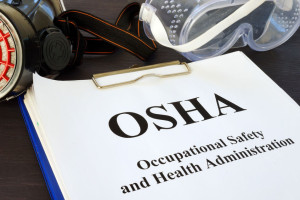Does your company have an effective plan to reduce on-the-job injuries and workers compensation costs, promote workplace safety and manage a wide variety of operational risks?
It should. Accidents and incidents happen in all types of companies — not just those that have employees operating heavy machinery or working in construction. Nationwide, an estimated 4 million workers are injured each year, and a significant portion of those injuries and accidents happen in or around offices. Injuries can be financially devastating for a small company, and they represent just a portion of the wide array of risks companies face each day.
That’s why effective risk management is vital. Any business — regardless of size or industry, needs to have a plan in place designed to protect the health and welfare of their employees and to reduce operational risk. In addition to accidents and injuries, there are a variety of risks companies face when hiring and terminating employees and in the day-to-day tasks of running a business. At Accurate Protection, we work directly with our clients, helping them to identify a wide variety of risks unique to their industry and business and guiding them to take a smart approach for reducing or even eliminating exposure.
Each company faces a variety of different kinds of risks and has some that are unique to their business and industry, so a customized approach is important. Our detailed, multi-part education program, Work Smart, gives business owners the information they need to start developing their own quality risk mitigation programs and better manage their workers compensation program and costs. Filled with nearly three dozen documented smart business practices in every area, from hiring to pre-incident planning, Work Smart helps business leaders develop activities, policies and procedures that can reduce unnecessary business risks. We make it easy to get the information you need and offer a library of over 1,000 downloadable articles in both English and Spanish that can help with all aspects of risk management.
Does your business have a safety manual? We’ll help you develop that important risk-reducing tool, too. At Accurate Protection, we’ll help your business identify its unique risks, develop risk mitigation strategies, address exposures through the right insurance coverages and monitor plans/strategies on an ongoing basis. We’ll also help your business make adjustments to your plans/strategies as needed. We’re much more than simply an insurance provider and here to help your company operate more effectively and efficiently.
Our company helps yours get the accurate protection it deserves.







